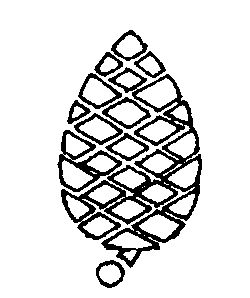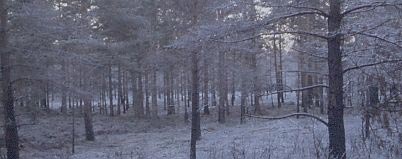|
|
|
|
| Developers bugged by discovery of rare insects at housing sites. |
||
You can download full resolution photo. The following is from an article published in the Sunday Herald, 18 January 2009. It mentions two sites where BSCG is campaigning with others against inappropriate development. Two sites are mentioned in the article: The Mossie is threatened by the larger development. As well as being a paradise for bumblebees and other invertebrates, it is an exceptional site, (even in Strathspey terms) for breeding wading birds and supports at least two UK red-listed vascular plants and an important assemblage of grassland fungi. The mining bee referred to, Andrena marginata, depends on flowers of devil’s-bit scabious (see photo of this bee taken August 2008 on the proposed development site) . Before the 2008 sighting, this bee was last recorded near Grantown in 1949. It should be noted that more than five species of butterfly have been recorded on this site of which five are "UK Priority Species". BSCG members have recently taken photos on the Mossie of many of these as well as over 30 species of hoverfly. The other site under threat, at Boat of Garten, is important not only for invertebrates but also supports red squirrels, rare woodland plants and more than one UK Priority and Scottish Biodiversity List species of tooth fungi. Capercaillie, one of our most impressive but most endangered birds, are still sometimes recorded on the proposed development site and the rest of the wood has a nationally important population of capercaillie. It seems most likely that the Slender Groundhopper Tetrix subulata discovered at the edge of the woodland here is part of a relict vulnerable population. This exciting find is mentioned in the December 2008 issue of the magazine British Wildlife. Developers bugged by discovery of rare insects at housing sites A STARTLING array of rare and colourful bugs have been discovered at two sites in the Cairngorms National Park earmarked for major housing developments. The findings, including several Scottish firsts for insects, will put a major new conservation strategy being launched by ministers this week to the test. Experts fear that some of the species risk being lost for ever. Among the insects uncovered is a small bee previously thought extinct, plus three little hoppers and a thin green bug with long antennae never before recorded in Scotland. The gnarled-looking Slender Groundhopper has also be found much further north than ever before. On Tuesday, environment minister Michael Russell will help to unveil a strategy for saving Scotland's bugs. Drawn up by conservation groups, it will set out a framework for protecting Scotland's endangered invertebrates - animals without backbones such as insects, snails and shellfish. The discovery of a series of endangered bugs in the path of developments in the Cairngorms highlights the problems the new strategy will have to tackle. The animals' future could be jeopardised by demands to build new houses in sensitive areas. "More rare and threatened invertebrate species are found in the Cairngorms area than anywhere else in Scotland, or perhaps the UK," said Craig Macadam, the Scottish conservation office for Buglife, which campaigns to protect invertebrates. The area's natural habitats were "incredibly important", he argued. "Current development plans are putting increasing pressure on these habitats and their wildlife, and there is a real risk that rare invertebrates could be lost for ever." Macadam revealed that one strand of the new strategy would be the identification of the most important areas for invertebrates. "It will then be up to the planning authorities to do whatever they can to protect these areas, and the species that live there, for future generations," he said. The Fife building company, Muir Homes, has applied for permission to build 193 homes tat the Mossie in Grantown-on-Spey, not far from the headquarters of the Cairngorms National Park Authority. But local conservationists have photographed a mining bee, known as Andrena marginata, at the site. Until a few years ago, it was feared extinct in Scotland and is listed as endangered in seven European countries. Four other bugs not previously recorded in Scotland have been seen at the Mossie, along with more than 30 species of hoverfly. Other endangered insects, including the blaeberry bumblebee and five species of butterfly, are also present in the area. At the same time an Aviemore developer, Davall Developments, has submitted an application to build 79 houses, plus land for a primary school, in Boat of Garten. There, too, however, there are bugs in need of saving. Conservationists have visited the site and photographed a Slender Groundhopper, which before now has not been spotted in the UK north of Yorkshire. The area is also important for protected insects such as the narrow-headed ant. The Badenoch and Strathspey Conservation Group is alarmed that the Cairngorms National Park Authority has zoned areas like these for development. "We will be renewing our call to the authority to refuse development here in line with government undertakings to halt biodiversity loss and protect priceless natural heritage," said the group's convenor, Dr Gus Jones. The park authority has called in the applications for Grantown-on-Spey and Boat of Garten so that their environmental impacts can be properly considered. "No dates have been set for determination in either case," a park spokeswoman told the Sunday Herald. She promised that the potential impact of the proposed developments on wildlife would be taken into account. Invertebrates were one of the Cairngorms' special qualities and an indicator of the park's environmental health, she said. The spokeswoman added: "The park authority and its partners are involved in a number of projects aimed at conserving, enhancing and raising awareness of invertebrates. "We welcome Buglife's national strategy and the contribution it will make to the work already taking place in the park." |
||


